Microeconomics
2024-08-29 13:58:56 0 Report
Login to view full content
Other creations by the author
Outline/Content
The theory of needs
Several concepts related to the requirements
1. Demand:
(1) definition
Consumers are willing and able to purchase the quantity of a particular good (or service) at various prices over a certain period of time.
The quantity of goods or services that consumers are willing and able to purchase at various possible prices.
An effective demand where consumers have both the willingness and the ability to purchase, a need with the capacity to pay.
(2) explanation
The unity of purchase intention and purchasing power (in a realistic sense), demand ≠ need, demand = willingness to purchase and ability to purchase.
involving two variables simultaneously—the price of the product and the corresponding quantity demanded
Non-actual purchase volume does not necessarily match the actual demand (excess demand over supply).
(3) Category:
The market demand — the total quantity of goods or services that all consumers in the market are willing and able to purchase at all possible prices (calculation: aggregate individual quantities demanded)
Individual demand — the quantity of goods or services a single consumer is willing and able to purchase at various possible prices.
2. The method of expressing requirements:
(1) Requirements Table (Table Method):
Characteristics — Clearly demonstrates the functional relationship between the price and demand of the product.
Definition — A table describing the correspondence between the price of goods or services and the required quantity.
Reflects the economic principle that price and quantity demanded move inversely to each other.
(2) Demand curve (graphical method): (with a negative slope)
Definition — The two-dimensional curve that displays the corresponding relationship between the price of goods or services and the required quantity.
Characteristics — more intuitively reflects the functional relationship between the price and demand of goods
The demand function — Qd = ƒ (P, I, T, Pi, E, ...) only considers the demand function when the price of the good itself is taken into account.
3. The law of demand:
(1) Definition: Under the condition that other factors affecting demand are constant, there exists an inverse relationship of dependence between the quantity demanded of a commodity and its price (negative correlation).
(2) Exception: Price and quantity demanded change in the same direction.
Giffen Goods: Inferior necessities (during special periods)
Conspicuous consumption goods: luxury items (symbolizing wealth and status)
Speculative commodities: such as stocks
(3) explanation:
Substitution effect:
The effect caused by the change in the relative price of goods, which is triggered by the fluctuation of commodity prices, leading to a change in the quantity demanded for goods.
The essence — the price of this product has changed relative to other products, while the prices of other products have remained the same or decreased.
Replace the product with related goods.
Income effect:
The effect of a change in real income caused by fluctuations in the price of goods, resulting in a change in the quantity demanded for the goods.
The essence — when consumers' real income changes relative to the price of a good, meaning their purchasing power decreases, consumers have to alter their consumption bundle to lower their utility level (real income decreases, quantity purchased decreases).
Factors influencing demand and two types of demand changes with different natures:
1. Factors affecting demand:
(1) The current price of the product or service
(2) Prices of other related products or services (related)
A. Substitute
B. Complementary goods: utility complementarity, matching
(3) The expected price of goods or services by consumers:
The impact of time variation, changes in the same direction; expected but did not occur
Consumer income level: consumer behavior
Consumer preferences: Weakening the influence of other factors
2. Two different types of demand changes:
(1) Along the changes in the demand curve:
Definition —— When other factors remain constant, the change in the quantity demanded of a good or service is caused solely by price factors.
The essence — the change in consumer demand for a product solely caused by changes in the product's own price.
The graph — represented by the movement of a point on a given demand curve, without the curve itself shifting.
The movement of the entire demand curve:
Definition — Under the condition of constant prices, changes in the quantity demanded for goods or services are caused by other factors (factors other than price).
The essence refers to the change in consumer demand for a product caused by variations in factors other than the product's own price.
Graphically — represented as the movement of the entire demand curve (shifts in demand quantity, translation of the functional relationship)
Change — the alteration of one or several factors can lead to a change in demand, causing the demand curve to shift.
Supply Theory
Several concepts related to supply
1. Supply
(1) Definition
The producer, within a certain period, is willing and able to offer for sale the quantity of a particular commodity (or service) at various prices.
The quantity of goods or services that producers are willing to sell and able to sell at various prices
An effective supply where the producer has both the willingness and the ability to sell
(2) Description
The unity of willingness to sell and production supply capacity, supply ≠ production, supply = willingness to sell and ability to sell.
Involving two variables simultaneously: the price of the commodity and the corresponding supply quantity.
Non-actual sales volume; supply does not necessarily equal actual consumption.
(3) Categorization
Personal supply — the quantity of goods or services a single producer is willing and able to sell at various prices.
Market supply — the total quantity of goods or services that all producers in the market are willing to sell and able to sell at various prices (the aggregation of individual supplies).
2. The method of supply representation
(1) Supply Table (Table Method):
Definition — A table describing the correspondence between the price of goods or services and the quantity supplied.
Features — Clearly demonstrate the corresponding relationship between the price and supply quantity of the product.
(2) Supply curve (graphical method): (slope is positive)
Definition — The two-dimensional curve that displays the corresponding relationship between the price of goods or services and the quantity supplied.
Characteristics — More intuitively sense the functional relationship between the price and supply of goods.
The supply function — QS = ƒ(P, a, Pi, E, Pf, …) is the supply function considering only the price of the good itself.
The corresponding relationship between the quantity of supply and various factors affecting the quantity of supply (price is the key factor)
3. Law of Supply
(1) Definition: Under given conditions, there is a positive correlation between the quantity supplied of a commodity and its price (they change in the same direction).
(2) Exception:
Supply of labor: In certain cases, it conforms to the law of supply (at lower prices), but may be the opposite at a certain price point.
Land: Relatively speaking, the supply is fixed, and while the supply curve for a particular industry may be steep...
Speculative goods: decisions to hold or sell made in response to profit incentives
The manufacturer's goal is to pursue maximum profit - price changes affect the profit margin.
Factors affecting supply and two types of supply changes with different natures
1. Factors affecting supply:
(1) The current price of goods or services: the transfer of resources between different production sectors and industries
(2) Prices of other related goods or services: current and future supply
(3) The expected price of goods or services by the producer:
(4) Production cost: Directly related to profit
(5) Production technology and management level: making output and cost internally negatively correlated
6. Natural factors: Natural disasters (beyond human control)
2. Two different types of supply changes
(1) Along the movement of the supply curve:
Definition — The change in the quantity of goods supplied caused by a change in price, with all other factors remaining constant.
The essence — the change in the quantity of goods supplied by producers caused solely by changes in the price of the goods themselves.
Graphically, it is manifested as a movement of a point along a given supply curve, with the quantity supplied moving along the supply curve.
(2) The movement of the entire supply curve:
Definition — the change in the quantity of goods supplied caused by factors other than a constant price.
The essence refers to the change in the quantity of goods supplied by manufacturers caused by changes in factors other than the intrinsic price of the goods themselves.
The graph — represented by the movement of the entire supply curve
Change — the alteration of one or several factors will lead to a change in supply, causing the supply curve to shift.
Supply-demand equilibrium and equilibrium price, equilibrium output
I. Several Important Concepts
1. Equilibrium
(1) Definition: In economics, relevant variables interact and constrain each other, ultimately reaching a state of relative equilibrium.
(2) Substance: relatively stable stillness - no internal factors that would change the current state
The result of the mutual interaction between the forces of supply and demand in the market
(3) Specifically: The market price is the state where the supply and demand quantities of a commodity are exactly equal, meaning that consumers buy exactly the quantity of goods they are willing to purchase at that price, and producers sell exactly the quantity of goods they are willing to sell at that price (market clearance).
2. Equilibrium price and equilibrium quantity:
(1) Equilibrium price: the price at which the quantity demanded by consumers for a certain commodity is equal to the quantity supplied by producers (market clearing price), when the forces of supply and demand for the commodity interact to reach an equilibrium state, that is, when the quantity supplied in the market is exactly equal to the quantity demanded.
(2) Balanced output: the transaction volume at the equilibrium price (i.e., the quantity demanded or supplied), the supply quantity when the market supply equals the market demand at the equilibrium price level.
Characteristics: Formed through the spontaneous adjustment of market supply and demand relationships, reflected in geometric figures as the equilibrium point, which is the intersection of the demand curve and the supply curve.
The process of forming supply-demand equilibrium and the law of supply and demand
1. The process of forming supply-demand equilibrium: Static analysis - price adjusts the gap between supply and demand to the equilibrium point (the gap causes changes).
(1) The product price is at a lower price level: the actual market price is below the equilibrium price.
Supply cannot meet demand — goods are in short supply, there is excess demand, a seller's market (where sellers dominate the market).
Consumers consider offering a higher price to purchase the quantity of goods they need due to not getting the amount of satisfaction they desire.
Producers are willing to offer more goods due to rising prices.
The result — price increase, demand reduction, supply increase to equilibrium state
The product prices are at a high level: the actual market prices are higher than the equilibrium price.
Shortage of supply —— Excess of goods, there is an over-supply, buyer's market (buyer-dominated market)
Producers — attempt to attract consumers by lowering prices, reducing production to ensure all their goods are sold out.
The result - prices decrease, consumer demand increases, and producer supply decreases to reach equilibrium.
2. The law of supply and demand:
(1) Definition: The adjustment of commodity prices in the market will ultimately lead to the equality of supply and demand, with the actual price tending towards the equilibrium price.
(2) Specifically, the mutual interaction between market supply and demand ultimately forms a market equilibrium state, while also causing the actual market price to tend towards the equilibrium price, and the quantity demanded and supplied eventually tend to be equal.
3. Consumer surplus and producer surplus
(1) Consumer surplus:
The definition: Consumer surplus refers to the benefit represented by the difference between the price a consumer is willing and able to pay for a good and the actual price paid, which is the surplus part of the amount of money a buyer is willing to pay for a good minus the actual amount paid by the buyer.
Reason — Except for the last unit, the marginal utility of the commodity expressed in currency (in US dollars) is greater than its price. The law of diminishing marginal utility states that the price consumers are willing to pay based on their evaluation of the marginal utility of a specific product or service is often higher than the market price determined by the relationship between supply and demand.
The calculation formula — Consumer surplus = Buyer's valuation - Buyer's actual payment
(2) Producer surplus:
The interest represented by the difference between the actual price provided by the producer when supplying goods and the price that the producer is willing and able to provide.
The calculation formula — Producer surplus = Sellers' revenue - Sellers' actual cost
The essence — the profit that enterprises earn, the revenue that sellers gain during the selling process, economic rent.
The total profit of a manufacturer from producing a product plus the compensation to the factor owners exceeds and falls below the amount they require as minimum returns.
(3) Total market surplus
Definition — The benefits obtained by both parties in the transaction process.
The calculation formula — Producer surplus = Total surplus = Buyer's valuation - Buyer's actual payment + Seller's revenue - Seller's actual cost = Buyer's valuation - Seller's actual cost
The changes in equilibrium price and equilibrium quantity:
1. In the case where supply remains constant and demand changes (the impact of the shift in the demand curve on equilibrium price and equilibrium output):
(1) Reason: Non-price factors (external factors)
(2) Change: As demand increases, the demand curve shifts to the right (upward), equilibrium price rises, and equilibrium quantity increases. As demand decreases, the demand curve shifts to the left (downward), equilibrium price falls, and equilibrium quantity decreases.
2. The situation where demand remains unchanged and supply changes (the impact of the shift in the supply curve on equilibrium price and equilibrium output):
(1) Reason: Non-price factors (external factors)
(2) Change: With an increase in supply, the supply curve shifts to the right (downward), equilibrium price decreases, and equilibrium quantity increases; with a decrease in supply, the supply curve shifts to the left (upward), equilibrium price rises, and equilibrium quantity decreases.
3. The situation where demand and supply change simultaneously:
(1) The change in the same direction remains unchanged: the equilibrium price and equilibrium quantity remain unchanged.
Left shift: Equilibrium price is not fixed, equilibrium output decreases (both reduced)
Right shift: The equilibrium price is unstable, the equilibrium output increases (increases together)
Price increase: The increase in demand is greater than the increase in supply
The magnitude of the fluctuation is: price decrease, the increase in demand is less than the increase in supply.
The price remains unchanged: the increase in demand and supply is the same.
(2) Reverse change
Demand shifts right, supply shifts left: price increases, output is uncertain (demand exceeds supply). Demand shifts left, supply shifts right: price decreases, output is uncertain (supply exceeds demand).
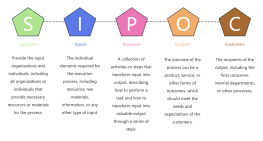
Collect
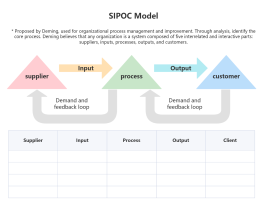
Collect
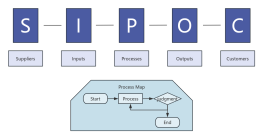
Collect
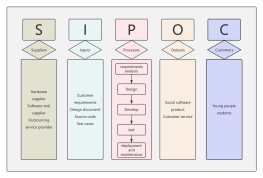
Collect
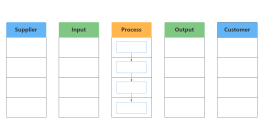
Collect

0 Comments
Next page
Recommended for you